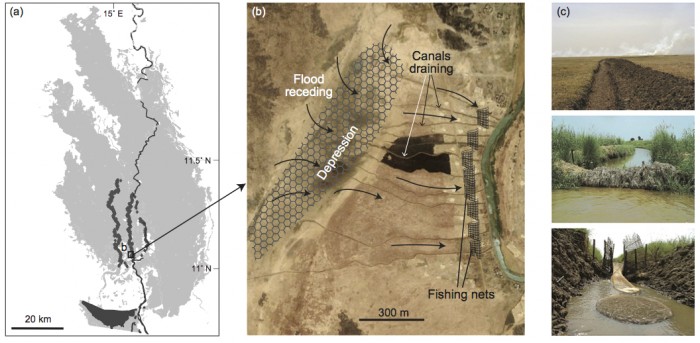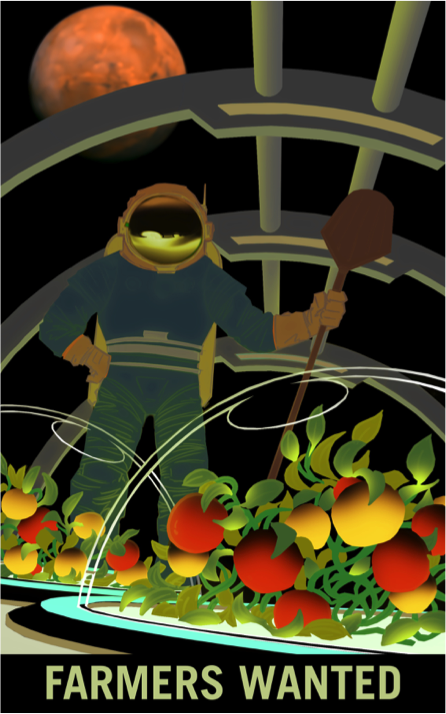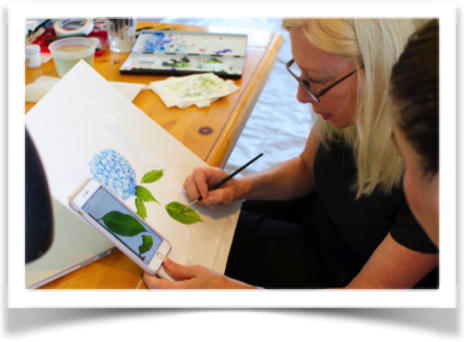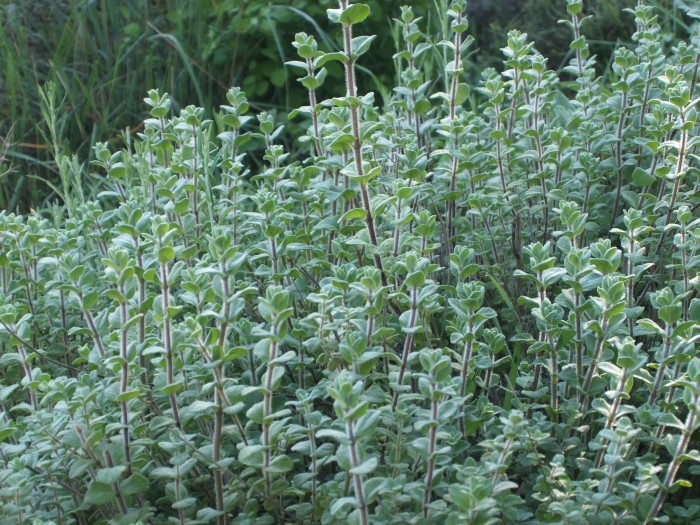This volume, guested edited by Kay E. Lewis-Jones, revolves around the theme of “People and Plants,” as “recent research on plants … is now expanding our appreciation both of the fundamental role plants have in the function and health of the living world, and of their own intimate interactions within it.” The guest editor’s introduction is available to all readers for free.
Category: Blog
Studying African Floodplains as Coupled Systems
“The major problems in the world are the result of the difference between how nature works and the way people think.”
— Gregory Bateson
The quote from Gregory Bateson, from the documentary Ecology of Mind (2011) that Nora Bateson made about her father, captures one of the key themes in his work: the way we perceive and conceive of the world is poor match for how the world really works (Bateson 1972, [1979] 2002). The mismatch between our theoretical models and the world we are studying is a key problem in scientific research. I tell students that “theory world” and the “world out there” are two very different worlds and that theoretical models are simply thinking tools that allow us to get a better handle on the world. Some of these thinking tools are better for some problems than for others, and most problems require multiple tools to get the job done.
Cultivating an Outer Space Ecology: Introducing the On-Orbit Gardener
Part of a series commissioned in 2009 by NASA for an exhibit at the Kennedy Space Center, the “Farmers Wanted” poster above is only one of many advertising for humanity’s resettlement on Mars. The series, Mars Explorers Wanted, includes other posters with text such as “We Need You”—an astronautical replica of Uncle Sam and the infamous army recruitment poster—and advertisements for Mars teachers, technicians, and explorers. Although depicted as archetypes of Space Western sci-fi, these posters are no longer far from reality. Since the 1960s NASA, the Russian Space Agency (Roscosmos State Corporation), and the ESA (European Space Agency) have been developing tools and methods to take humanity’s endeavors deeper into the unknowns of outer space and for longer, possibly permanent, periods of time. An integral part of this increasingly global, or even interplanetary, mission is not only designing equipment able to withstand the speculated conditions of outer space environments but also designing environments and ecologies to sustain those who venture above.
Read More “Cultivating an Outer Space Ecology: Introducing the On-Orbit Gardener”
Digital Environments: Dealing with Data in Socio-Environmental Field Research
How do communication technologies—whether novel or newly extended—change the objects, subjects, and practices of environmental anthropology? Lately, I’ve been pondering this question, thinking particularly about two contrasting incidents from my fieldwork in Bolivia.
The first is the memory of sitting in scratchy-bright, high-altitude sunlight, playing with my clunky first-generation smartphone in a lull between surveys in mid-2014. Slipping a SIM card from the state-run cellular company, Entel, into my phone, I booted it up and was pleasantly surprised to discover that the long-promised, nationwide 4G signal, enabled by Bolivia’s newly launched satellite, Tupac Katari, had indeed arrived in this remote field site. Suddenly, I found myself able to send and receive Gchat messages with my husband, who was sitting in his office back in the States. I felt a little guilty about being distracted by my phone during this precious time in the field, but I was also happy to be able to let him know that I had arrived safely, to share some details about how my day had gone, and to confirm when he should expect to hear from me next. Though nothing in my surroundings looked different, I felt just a bit closer to home.
Read More “Digital Environments: Dealing with Data in Socio-Environmental Field Research”
Present Progressive?: Of Cell Phones and Energy Transitions in the Anthropocene
The first week of September was a rather busy one, beginning with the announcement by the Subcomission on Quaternary Stratigraphy’s Working Group on the Anthropocene (AWG), reporting their vote for the onset of the Anthropocene Epoch. In their report to the International Union of Geological Sciences (IUGS), the Working Group favored the nuclear fallout of 1950s as a defining moment, though only one of several candidates that must still be considered before the designation of type location for the Anthropocene’s golden spike. A “golden spike” is a physical marker for the lower boundary of a geologic period, as defined by a Global Boundary Stratotype Section and Point (GSSP), which must be specified by a unit of the International Commission on Stratigraphy. So, the AWG must decide what signal demonstrates most clearly and continuously the reality of anthropogenic dominance on the geologic processes of the planet. Most often, this is done by designation of a type fossil; in the case of the Anthropocene, a leading candidate is the domestic chicken. Just think about that one: dinosaurs have literally come home to roost…
Read More “Present Progressive?: Of Cell Phones and Energy Transitions in the Anthropocene”
Celebrate the Centennial of the US National Parks Service with a Free Chapter
Today is the 100th birthday of the US National Parks Service!
Read More “Celebrate the Centennial of the US National Parks Service with a Free Chapter”
Where the Grass Is Greener: The Case for Anthropology in an Age of Populist Sentiment
In a presidential election year such as this, I as an American citizen am constantly inundated by the displays of political theater that have come to mark the quadrennial spectacle of our democracy: the conventions, photo ops, caricatures, impassioned speeches, and more. 2016 has been unique in that the specter of populism—which, to paraphrase Marx, has long haunted the United States of America—has come to overshadow “politics as usual.” Americans have watched in wonder on television and social media as populists Donald Trump and Bernie Sanders took the nation by storm (albeit with a few major ideological and strategic differences between them). However, with all of the showmanship and wonder surrounding the election of our country’s most powerful individual, it cannot be forgotten that the currents that drive national waves are playing out in unique ways across our country, in communities large and small alike.
Read More “Where the Grass Is Greener: The Case for Anthropology in an Age of Populist Sentiment”
The Art of Seeing: Grasping More-Than-Human Plant Worlds beyond Objectified “Nature”
As a Gregory Bateson scholar, I have long been fascinated with the notion that art and science might complement one another in the effort to bring forth, understand, and represent the “wholeness” of our more-than-human worlds. Far from pantheistic, Bateson’s notion of wholeness refers to the complex, nonlinear, multiscale relationships by means of which organisms, ecosystems, states of mind, cultural predispositions, and the socio-natural worlds we live in continuously unfold into being. Alas, the tenets of modern science that dominated many disciplines for most of the twentieth century were characteristically reductionist, thus inhibiting scientists from acknowledging and understanding the entangled nature of “natural” and of social phenomena. Even in light of the epistemological revolution that systems thinking portends, the representation of complexity and patterns that connect itself posed—and continues to pose—challenges to scientists and science communication experts.
Read More “The Art of Seeing: Grasping More-Than-Human Plant Worlds beyond Objectified “Nature””
Nicole Peterson: Challenges for Urban Food Access in an Era of Big Data
When standing in the middle of the transit hub in Charlotte, the noise of buses and passengers overwhelms the senses. Over twenty bays serve at least that many bus lines, and the roof amplifies brake sounds, honking, engine noises, and chatter. My students astutely suggested that interviews would be nearly impossible to record. But over several years, we collected interviews and surveys in this space, studying how transit riders in Charlotte accessed fruits, vegetables, and other foods. We wrote reports for our partner organization, Friendship Gardens, about the perception and use of the mobile farmers market they provided at the transit hub on Thursday afternoons.
Read More “Nicole Peterson: Challenges for Urban Food Access in an Era of Big Data”
A Political Ecology of Za’atar
The 2016 issue of Environment and Society focuses on “Plants and Peoples.” In some of the humanities and social sciences, human-plant studies, like those of human-animal relations, are perhaps in danger of being subsumed by the broader rubric of a multispecies approach to ecological assemblages. Perhaps this will be a fruitful path to take, but it may also betray a lack of intellectual commitment to what are after all quite recent engagements with, and foregrounding of, human-nonhuman relations and political conditions. Maybe we shouldn’t let the Questions of the Animal and the Plant escape our attention quite yet, before we have satisfactorily traced their complex meanderings through our sociopolitical ecologies. There are still radical stories to tell before they escape, or are rendered into the all-encompassing Gaia of a multispecies approach. As a contribution to this storytelling, here is some “plant-thinking” in the context of recent ecological developments in Palestine/Israel.




